K Thomas Lawson is proud to be a division of Bartlett Tree Experts, and our staff now has the backing of an international tree-care company and tree research laboratory to help continue providing excellent tree service and shrub care in the Charlottesville, Virginia area. View a complete list of professional tree services offered by Bartlett.
Instructions on how to Plant a Bare Root Tree
Below are instructions on how to plant a bare root tree. If you were to pull up a small sapling from the ground, shake the dirt off, you would have a bare root tree. In the nursery trade, a bare root tree is usually rather small and has a high survival rate, and is easy to ship. Most commonly you will find a bare root tree available through mail/internet sites. Transplanting a sapling will result in a bare root tree, so treat them the same.
In contrast, a container-grown tree tree and a balled and burlaped tree require different steps in preparing the tree brought home from the nursery. Usually these trees will be larger as well.
If you have a small tree with little to no dirt on the roots, this is your page. Once the initial steps are covered for the different plants, the final steps are the same.
Obtain your bareroot tree
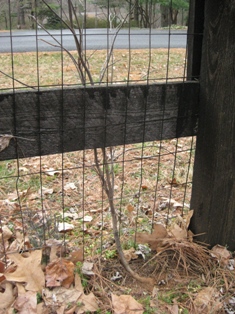 |
We found this tree, a perfectly good Redbud, Cercis canadensis, growing through a fence and destined to get damaged by the lawn service. We decided to move it to a more desirable location because the mature Redbuds in the vicinity are on their last years. This seedling is likely from these elder trees. |
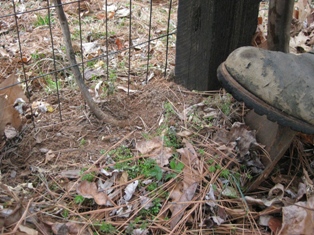 |
I dug this one up very carefully so that we could keep as many of the roots intact as possible. I dug well away from the trunk to begin, making a large circle with the shovel blade, deep into the ground. I must try to include the deep single tap root which is first sent down by the seedling. |
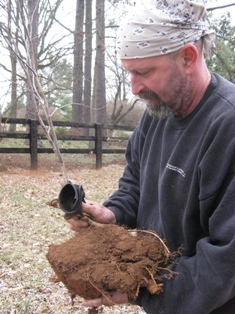 |
Slowly working the clod of dirt around the tree out of the ground I lift the tree out of the ground with the soil. I am holding the tender stem with my gloves so I don't scar the delicate tissues and make more work for the tree to heal itself |
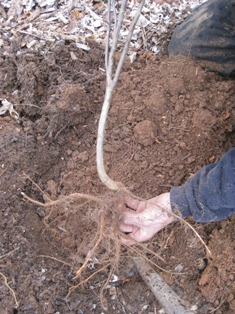 |
What I am left with is a bare root tree with at least 80% of the roots intact. |
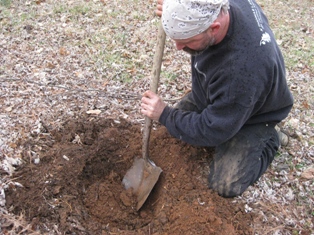 |
I make the hole in the ground significantly larger than the roots for maximum spread of the roots when I plant. |
Whether you have a purchased or dug-up sapling, now the bareroot tree planting begins
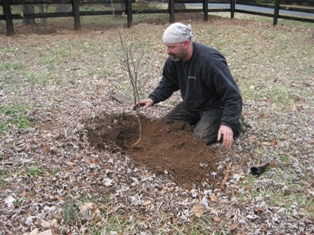 |
Place the tree in the hole, but not too deep. The trunk bark is not able to handle the moisture under soil or mulch. Root bark, however, is different and can tolerate these normal conditions. There is usually an obvious change from trunk to roots—where a major branching occurs or where the first rootlets come off the side. Place the tree where these roots or rootlets will be barely be buried by the finished soil level—including slight compaction (discussed below). You may find you are holding the tree up as you get the to next step... |
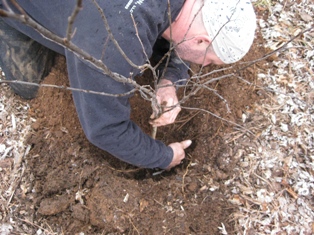 |
Slowly start packing the dirt around each roots as carefully as possible. I am holding the tree in position with one hand. |
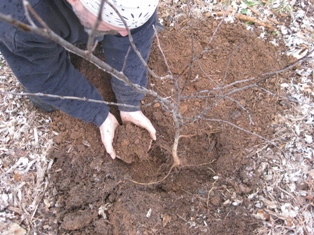 |
More careful placing of soil. Breaking up large chunks of soil Pack the soil gently with your hands so that the very little hairy roots are not damaged. Theses are the feeder roots that provide nutrients and gas exchange. The larger roots are for stabilization. They can handle the soil being a bit firmer around them. |
Attention to details pays off
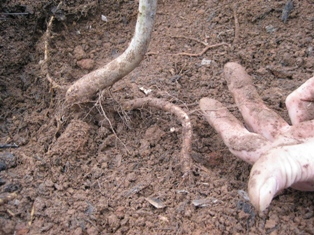 |
I am paying a lot of attention to the little roots, putting soil exactly where needed so no air pockets are remaining. Each root gets special attention. |
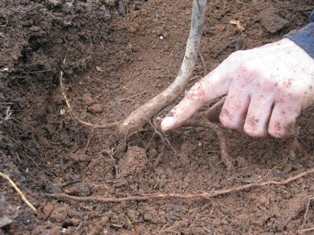 |
Very Very important small feeder roots that absorb nutrients and exchange gases, not to mention absorb water! Gently crumble soil in around them, packing gently with fingers. |
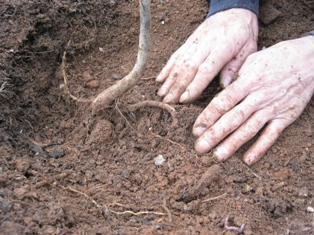 |
Gently packing the soil, not too hard. Keep in mind the delicate feeder roots which you do not want to break! |
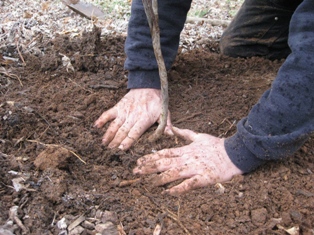 |
With two hands, apply gentle pressure to lightly compact the soil around the feeder and stabilization roots. The soil will still need to have micro air spaces to alternately take in water have air touching the roots. Check the SOIL LEVEL! Do not miss this important step: |
Just about finished
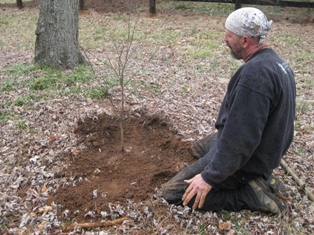 |
Talk to the tree a bit. |
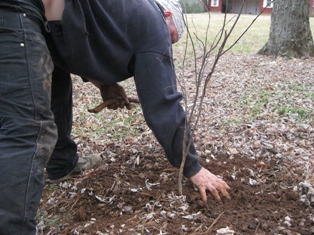 |
After making sure the bareroot tree is stable, replace a light dusting of top soil, leaves, or whatever mulch you have. You are only providing a little bit of cover for the soil so it is not dried out, and so that rain does not erode the soil. Do not make a volcano of mulch! Make it look natural. This is best for the tree. Water the area with a generous but not excessive amount of water. The water will help soil fill in around the roots, but don't make a mud pit which will destabilize the tree. |
This Redbud will definitely make it!
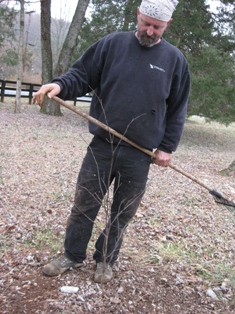 |
Let’s review the most important points in planting a bareroot tree: • If digging up/transplanting, dig widely and deeply to get all the roots |
Focus on root development during the first year
We don't recommend a regular fertilizer since these are designed to stimulate the growth of the whole tree. Right now, getting the roots established is the key agenda. A low-dose fertilizer with emphasis on phosphates, or a product with root hormones (sometimes called a root boost) can be added to help your small tree establish it's roots.
Done with Plant a Bare Root Tree, Back to Do it Yourself
Home--Back to Arborist-treecare.com
